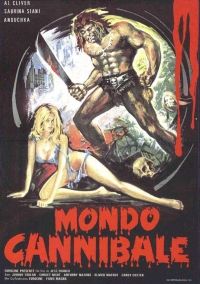(Various directors and screenwriters)
Storyline(s)
This collection of nine short films is a horror-themed take on different holidays, ranging from
New Year’s Eve to Christmas.
Review
I admire the ambitious, expansive theme of this filmic collection even though many of the shorts are disappointing, some of them egregiously bad, some of them just-short-of-the-mark. A few of them are good (“Candy,” “Labor Day,” “Cranberry Sauce,” “Hannukah” and “Merry and Fright”) but for the most part, one could skip HORROR and watch something better, like ALL THE CREATURES WERE STIRRING (2018) and A CHRISTMAS HORROR STORY (2015).
In Curtis Schultz’s “Father Time,” a pregnant woman has nightmares about Father Time. It goes exactly where one might expect it to go, no surprises or scary thrills in this one.
“Becoming Patrick” (director: Bel Delià; screenwriters: Kevin Marron and Rachel Rath): A man is kidnapped and beaten by masked assailants. (This is shown from his point of view, so there’s minimal on-camera violence.) He wakes─surprisingly unhurt─in an unexpected environment. “Patrick“ has a dumb, underwhelming finish.
Richard Galli’s “Forty Winks” tells the story of a woman who eats meat on Easter and becomes dangerously crazy. This no-frills, no-twist and dumb-ending short is time wasted.
“4th of July” (screenwriter/director: Vito Trabucco) is a mix of a revenge thriller and Quentin Tarantino’s PULP FICTION (1994) with an ending lifted from George A. Romero’s NIGHT OF THE LIVING DEAD (1968). This polemic, ugly, stripped-of-any-entertainment-value short flick has a point, but its finish is telegraphed early on, and its direct rip-off mix (sans any originality) mark this as unpleasant, tiresome revenge porn. If you’re going to make an edutainment film, there should be entertainment in the mix as well as what some view as education, not just lazily ripped-off-from-better-films-and-news-headlines bulls**t.
“Labor Day” (screenwriter/director: Jessica Sonneborn): A pregnant woman has GROUNDHOG DAY-style waking nightmares, slowly revealing possible clues to her situation. As a non-fan of waking-over-and-over-nightmare scenarios, this made me wish “Labor” was done twenty seconds in, despite its clever double entendre title and twisted situation. Those without an aversion to GROUNDHOG DAY-style works may enjoy this one a lot.
Matt McWilliams and Josh Murphy’s “Candy” is a fun haunted house-and-forest piece that, FX-wise, recalls Sam Raimi’s 1981 cult classic THE EVIL DEAD. While “Candy” telegraphs its wrap-up early on, it is entertaining, and one of the best microworks in this anthology.
Thanksgiving is rewarding in John K.D. Graham’s “Cranberry Sauce,” in which a young woman must pass through a spooky suburban (and possibly haunted) L.A. tunnel to buy cranberry sauce and cigarettes. This is another entertaining brief flick, with some unexpected developments and striking visuals aspects.
Jonathan and Jessica Sonneborn’s “Hannukah” is a light, humorous take on infidelity, embezzlement, fear, and murder, with a nice end-twist.
“Merry and Fright” (screenwriters: Colin Costello and Westley Alley; director: Westley Alley) wraps up this collection of shorts. In “Merry,” the host of the Anderson Family’s annual Christmas party tells two abbreviated tales, one about a slasher Santa with a (possible) femme fatale, the other about a don’t-open-the-door Santa-Gram. A mostly solid, well-written work─I love its effective tales-within-a-tale structure─its ending is okay.















